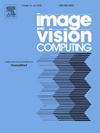Cross-set data augmentation for semi-supervised medical image segmentation
IF 4.2
3区 计算机科学
Q2 COMPUTER SCIENCE, ARTIFICIAL INTELLIGENCE
引用次数: 0
Abstract
Medical image semantic segmentation is a fundamental yet challenging research task. However, training a fully supervised model for this task requires a substantial amount of pixel-level annotated data, which poses a significant challenge for annotators due to the necessity of specialized medical expert knowledge. To mitigate the labeling burden, a semi-supervised medical image segmentation model that leverages both a small quantity of labeled data and a substantial amount of unlabeled data has attracted prominent attention. However, the performance of current methods is constrained by the distribution mismatch problem between limited labeled and unlabeled datasets. To address this issue, we propose a cross-set data augmentation strategy aimed at minimizing the feature divergence between labeled and unlabeled data. Our approach involves mixing labeled and unlabeled data, as well as integrating ground truth with pseudo-labels to produce augmented samples. By employing three distinct cross-set data augmentation strategies, we enhance the diversity of the training dataset and fully exploit the perturbation space. Our experimental results on COVID-19 CT data, spinal cord gray matter MRI data and prostate T2-weighted MRI data substantiate the efficacy of our proposed approach. The code has been released at: CDA.
求助全文
约1分钟内获得全文
求助全文
来源期刊

Image and Vision Computing
工程技术-工程:电子与电气
CiteScore
8.50
自引率
8.50%
发文量
143
审稿时长
7.8 months
期刊介绍:
Image and Vision Computing has as a primary aim the provision of an effective medium of interchange for the results of high quality theoretical and applied research fundamental to all aspects of image interpretation and computer vision. The journal publishes work that proposes new image interpretation and computer vision methodology or addresses the application of such methods to real world scenes. It seeks to strengthen a deeper understanding in the discipline by encouraging the quantitative comparison and performance evaluation of the proposed methodology. The coverage includes: image interpretation, scene modelling, object recognition and tracking, shape analysis, monitoring and surveillance, active vision and robotic systems, SLAM, biologically-inspired computer vision, motion analysis, stereo vision, document image understanding, character and handwritten text recognition, face and gesture recognition, biometrics, vision-based human-computer interaction, human activity and behavior understanding, data fusion from multiple sensor inputs, image databases.
 求助内容:
求助内容: 应助结果提醒方式:
应助结果提醒方式:


